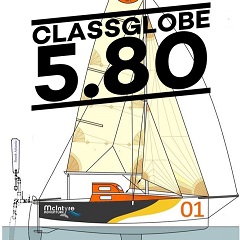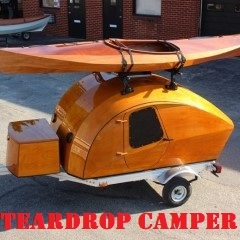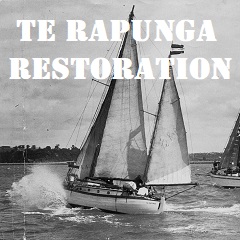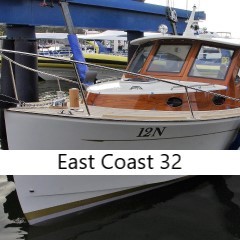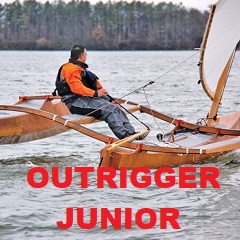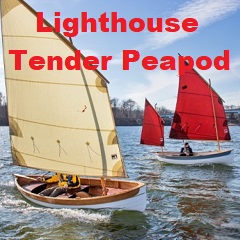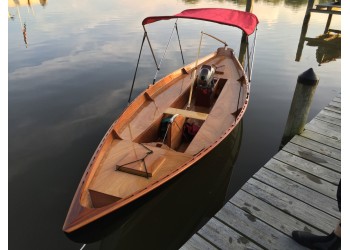Southwester Dory
Availability: Made to Order (approx. 5 weeks)
Ex Tax: See options for price
The Southwester Dory is a lightweight and highly capable expedition boat, designed for sailing, rowing, motoring, or any combination of the three. Elegant and straightforward to build from a kit or plans, this is an ideal boat for family outings, beach cruising, WaterTribe-style expeditions, or just gliding through the marshes.
| Model: | Length: | Beam: | Rowing Draft: | Sailing Draft: | Hull Weight: | Sail Area: | Max Payload: |
|---|---|---|---|---|---|---|---|
| Southwester Dory | 5.75m (18'10") |
1.57m (62") |
0.18m (7") |
0.91m (36") |
Approx. 114kg | 9.94m2 | See below |
The Northeaster Dory demonstrates all of the qualities that made traditional dories the most popular style of small craft prior to the age of fiberglass mass-production. It's easy and economical to build, carries a big load, and demonstrates uncanny performance under oars or sail.
While the Northeaster Dory has found fans on five continents and amassed an impressive catalog of adventures, six years of flat-out Northeaster Dory production has led to an accumulation of requests for modifications and variants. These ended up on the desk of designer John C. Harris, who resisted the temptation to complicate the original design. "The Northeaster Dory works because it's a gigantic amount of boat for the money, and quick and easy to build. If you start adding stuff, very quickly you don't have a light, economical boat any more."
What eventually motivated Harris to create a new design was a single persistent request: "60 out of every 100 questions I get about the Northeaster Dory are about where you can put a motor." The answer, he says, is, "Nowhere. There just isn't a place to put it, and regulations both here and in Europe require motorized vessels to carry a large volume of built-in flotation. That ruins the Northeaster Dory's flexible layout, easy construction, and low cost. The stock Northeaster Dory is a terrific rowing and sailing boat, and I mean to keep it that way."
To make room for an outboard motor, and to provide the built-in storage and buoyancy that are the hallmarks of a thoroughgoing expedition boat, the Northeaster Dory was stretched from 17 feet to 18'10" and the beam increased six inches, to 5'2".
The dominant feature of the Southwester Dory's interior is the bench seating along the sides of the boat. The compartments below the seats are filled with foam and provide 844 pounds of positive flotation. The wooden Southwester Dory is unsinkable already, but the flotation chambers make it easy to self-rescue from a serious mishap. They also make great comfortable seats---no sitting on the floor! This is a boat you sit "in," not "on." Large storage compartments at the bow and stern provide dry stowage for over 12 cubic feet of gear. Assuming the hatches stay in place, the storage compartments contribute another 790 pounds of flotation.
The Southwester Dory is exceptionally versatile. Builders may assemble their dream configuration by mixing and matching three kit packages. Everyone starts with the "base" kit, which includes everything you need to make a rowing boat, basically. To this you may add an outboard well, or a sailing rig, or both, or neither. Sailing rig and outboard well are modular units that may be added at any time, even long after construction of the hull is complete.
The outboard engine functionality required considerable experimentation and testing. Traditional dories have narrow sterns, so you simply cannot hang an engine there. The solution, dating back to the invention of the outboard engine more than a century ago, is a watertight "well" in the bottom of the boat, situated about five feet from the stern. This puts the outboard within easy reach of the crew.
From the start, Harris anticipated that many Southwester Dories would be built solely for use as a motor launch. The easily-driven dory hull, with a narrow waterline and fine ends, is suited to small outboards or electric motors. In tests, a 4-stroke 2-horsepower Honda outboard was sufficient to push the boat to a hull speed of about 6.5 knots. 80% power yields 5.75 knots; 50% power gives 5 knots. As an ultra-efficient motor launch to cruise rivers, lakes, bays, and harbors, the Southwester Dory is a singular good fit. "With the latest breed of electric motors," says Harris, "You could cruise for hours at jogging pace."
The outboard well will fit a maximum of a 4- or 5-horsepower petrol outboard. The narrow hull will not plane, so piling on any more power will just be wasted effort and payload. A 4hp run just above idle would be very quiet and sip gas. The outboard may be turned to steer the Southwester Dory, but tests suggest that the traditional stern-hung rudder is more efficient.
For sailing or beaching, the outboard kicks up inside the well. A simple plug seals the aperture for sailing or rowing performance while the outboard is tilted out of the water.
The Southwester Dory is a pip to sail. Two balanced lug sails drive the boat easily and with little fuss. Upwind performance is excellent in all conditions, and the Scandinavian-style yoke-and-draglink helm is light as a feather. The boat heels readily but picks up very strong secondary stability at 10-15 degrees. The ergonomic seating makes it easy for the crew to trim the boat for all conditions. Pedantic sailors will insist this is a cat-ketch, but Harris argues that it is functionally a cat-yawl. Whatever you prefer to call it, the rig is easy to set up, well-matched to the interior layout, and undeniably elegant. Using balanced-lug sails allows solid spruce spars of simple shape and minimal rigging. Expedition crews will rig a boom tent between the two masts and add slats to span port and starboard seats, creating a large sleeping platform for two adults.
A pivoting centerboard and kick-up rudder make beaching the Southwester Dory easy. Builders of a motoring-only version will use a simpler, shallower rudder. Obviously the centerboard is deleted in a motor launch version, opening up a lot more sprawling room in the big cockpit. Likewise, the Southwester Dory sails and rows so well that many sailors will leave off the demon engine and its well, regaining legroom and payload.
Unsurprisingly, given the hull weight well under 300 pounds and the shallow, easily-driven hull, the Southwester Dory can be rowed fast and far. Harris found in sea trials that with 8'6" oars the boat could be rowed all day at a gentle pace, and could be rowed upwind even with the sailing rig in place. Well known as a sail-and-oar purist, Harris says he'd probably build the boat without the motor well for beach-cruising. "But even as a snob about engines, I really enjoyed the boat in pure motor-launch mode. It makes so little fuss and uses so little gas, it's just a great way to see the waterfront."
With the considerable interior fit-out, the Southwester Dory is a bigger project than the Northeaster Dory or our smaller sailing and rowing craft. Expect to spend around 250 hours on a sailing version with the motor well option; builders will find some experience with epoxy and fiberglass useful before undertaking a Southwester Dory project. Construction uses our proprietary LapStitch™ technique to render a beautiful round-sided lapstrake hull without a mold or jig or the need for sophisticated joinery skills. Kit builders will assemble the planks using "puzzle" joints, then stitch the hull together with copper wire over four integral bulkheads and a transom. We've drilled the wire holes for you, and frames are located with computer-cut mortises in the BS1088 okoume marine plywood parts. The entire hull is assembled within a dozen hours of opening the kit boxes. Fiberglass reinforcement inside and out is applied, and the seats and compartments fitted. Finally, mahogany rails are glued on. (Spacered inwales are optional, but likely to be a popular addition.) Everything is sealed in multiple coats of epoxy for rugged durability, followed by paint and varnish for beauty and UV protection.
The Southwester Dory is as versatile and fun a family boat as we can imagine. Whether tooling around the harbor with a small outboard, or undertaking a serious coastal expedition under sail, it's a design that manages to offer a little something for everybody without any boring compromises.
How big an engine can I use?
This is not a planing hull, so anything more than is required to get you to hull speed (around 6.5 knots) is unnecessary. A 2hp will do this handily with two adults and two kids aboard. A 4hp run at low power will be quieter. 5hp or 60 pounds of engine weight is the maximum allowed.
Short or long shaft engine?
The outboard well is set up for a short-shaft (15") engine.
Can I steer with the outboard or do I have to use a rudder?
The outboard is five feet from the stern, so the boat turns faster if you use the rudder. Builders opting for a motor-only version actually build a different rudder design. It's shallower and eliminates the hassle of the sailboat's kick-up rudder.
Do I have to use the Scandinavian-style push-pull tiller?
If you're sailing, yes, no choice in the matter. You will quickly come to prefer it over all other systems, thanks to the flexibility it gives you in seating. Motor-only builders could revert to a conventional tiller, but because of the length of the tiller they will find it hard to turn sharply, and impossible to do so if a bimini is installed. We've shipped literally a thousand boats with this steering system and it really is a great fit for boats with narrow sterns.
When will a plans-only version be available?
They are ready now.
What are the plans and manual like if I want to build from scratch instead of from a kit?
Plans comprise full-sized patterns for every part in the boat, and both motoring and sailing options are included in all plans packages. The manual includes hundreds of step-by-step photos and diagrams covering all permutations.
Can you send me the plans digitally?
Sorry, until digital rights management technology for architectural work catches up to books and music, we are unable to transmit digital data, only paper plans and manuals.
Can two people row in tandem?
Not in a sailing version, no. Leave out the sailing components and the motor well and this would actually be a really capable tandem rowing expedition boat, however.
How much does the Southwester Dory weigh?
The stripped hull is about 200 pounds. A motoring version with engine in place weighs about 280 pounds. Rigged for sail, the hull weight is about 350 pounds.
What sort of trailer do I need for the Southwester Dory?
The Northeaster Dory is just light enough for cartopping on medium-to-large cars, but the Southwester Dory will need a trailer. The smallest, lightest trailer is plenty.
What is the Southwester Dory's payload?
Depends on which version you build. Based on early tests, these are the payload numbers, which leave a good reserve for performance in rough water:
- Base Rowing Version: 800lbs (362kg)
- Sailing Version (no motor well): 632lbs (286kg)
- Sailing Version (with motor well): 567lbs (257kg)
- Motoring Version (no sailing rig): 667lbs (302kg)
What if I don't want to add the motor well at first? Can I add it later? Can I add the sailing components later?
Sailing rig and outboard well are modular units that may be added at any time, even long after construction of the hull is complete.
How skilled do I need to be to build my own Southwester Dory?
Patient first-time boatbuilders who have some experience with epoxy and fiberglass could manage a Southwester Dory, especially working from a pre-cut kit. We have gone to tremendous lengths to simplify assembly without compromising the boat's appearance or function. Most builders will probably have built something smaller like a kayak or a dinghy before taking on this project.
Are there other sailing rig options?
Not at this time. We think the specified lug rig is a really good match of "engine" to "chassis."

